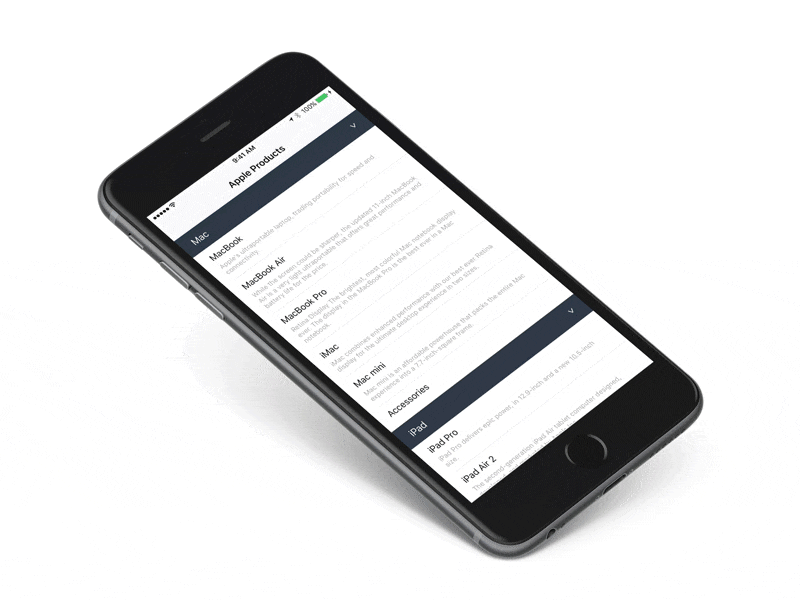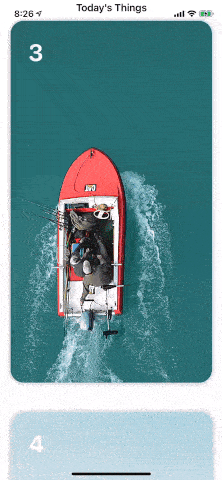- July 4, 2025
- Mins Read
A Swift library that helps you collapse table view sections.
Features
- Support collapsible sections in a table view
- Collapse all the sections by default (configurable)
- Keep only one section expanded (configurable)
- Auto resize table view cell
- Easy-to-use protocols for configuration
Requirements
- iOS 9.0+
- Xcode 10.0+
- Swift 4.2
Installation
Manual
Just clone and add the following Swift files to your project:
- CollapsibleTableSectionViewController.swfit
- CollapsibleTableViewHeader.swift
CocoaPods
- Make sure that you use latest stable Cocoapods version:
pod --version - If not, update it:
sudo gem install cocoapods pod initin you project root dirnano Podfile, add:
use_frameworks!
pod ‘CollapsibleTableSectionViewController’, ‘~> 2.0.1’
- Save it:
ctrl-x,y,enter pod update- Open generated
.xcworkspace - Don’t forget to import CollapsibleTableSectionViewController:
import CollapsibleTableSectionViewController!
Carthage
nano Cartfile- put
github "jeantimex/CollapsibleTableSectionViewController" ~> 2.0.1into Cartfile - Save it:
ctrl-x,y,enter - Run
carthage update - Copy
CollapsibleTableSectionViewController.frameworkfromCarthage/Build/iOSto your project - Make sure that
CollapsibleTableSectionViewControlleris added inEmbedded Binariessection of your target (or else you will getdyld library not loaded referenced from ... reason image not founderror) - Add
import CollapsibleTableSectionViewControlleron top of your view controller’s code
Usage
Step 1. Subclass CollapsibleTableSectionViewController
import CollapsibleTableSectionViewController
class ViewController: CollapsibleTableSectionViewController { … }
Step 2. Conforms to the CollapsibleTableSectionDelegate protocol
extension ViewController: CollapsibleTableSectionDelegate { … }
CollapsibleTableSectionDelegate Protocol
Most of the protocol methods are optional and they are very similar to UITableViewDataSource and UITableViewDelegate, here is a list of the available protocol methods:
1. optional func numberOfSections(_tableview: UITableView) – >Int
Asks the data source to return the number of sections in the table view. Default is 1.
extension ViewController: CollapsibleTableSectionDelegate {
func numberOfSections(_ tableView: UITableView) -> Int {
return 10
}
}
2. optional func collapsibleTableView(_tableview: UITableView, numberOfRowsInSection section: Int) – >Int
Returns the number of rows (table cells) in a specified section. Default is 0.
extension ViewController: CollapsibleTableSectionDelegate {
func collapsibleTableView(_ tableView: UITableView, numberOfRowsInSection section: Int) -> Int {
return 5
}
}
3. optional func collapsibleTableView(_tableView: UITableView, cellForRowAt indexPath: IndexPath) – >UITableViewCell
Returns the table cell at the specified index path. You can also use your custom cells, see our example projects for more details.
extension ViewController: CollapsibleTableSectionDelegate {
func collapsibleTableView(_ tableView: UITableView, cellForRowAt indexPath: IndexPath) -> UITableViewCell {
let cell = tableView.dequeueReusableCell(withIdentifier: “Cell”) as UITableViewCell? ?? UITableViewCell(style: .default, reuseIdentifier: “Cell”)
cell.textLabel?.text = “Cell Text”
return cell
}
}
4. optional func shouldCollapsibleByDefault(_tableView: UITableView) – >Bool
Return true if you would like collapse all the sections when the table is loaded. Default is false.
5. optional func shouldCollapseOthers(_tableView: UItableView) – >Bool
Return true if you would like to keep only one extended section (like accordion style). Default is false.
6. optional func collapsibleTableView(_tableView: UITableView,titleForHeaderInSection section: Int) – >String?
The title for each section. Default is nil.
7. optional func collapsibleTableView(_tableView: UITableView, didSelectRowAt indexPath: IndexPath)
Tells the delegate that the specified row is now selected.
Examples
Run the Examples project in this repo and you will find the following demos that help you get up and running:
- Basic: The minimal working example
- Custom Cell: Implement a custom cell programmatically
- Collapse By Default: All sections are collapsed by default
- Collapse Others: Accordion-style table view that only keeps one section expanded at a time
For more details of how to implement collapsible table sections using Swift, please checkout this repo for more information: https://github.com/jeantimex/ios-swift-collapsible-table-section.











